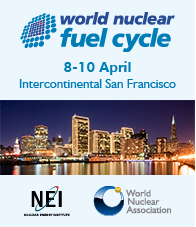
TRAVEL
Arriving into London
Arriving by air
London welcomes direct inbound flights from hundreds of destinations worldwide, which makes travelling to the UK capital by air one of the easiest ways to arrive. There are 5 international airports (London Heathrow, London Gatwick, London City, London Stansted, and London Luton). Combined, they carry 108 million passengers a year on outbound flights to 273 overseas destinations. All of Europe's principal business cities are within a 2-hour flight time and the whole of continental Europe is within 4 hours of the UK capital.
In addition, the massive growth of the budget airline market in recent years means that London can be reached from more than 80 European destinations daily by "low cost" carriers such as EasyJet and Ryanair for fares of exceptional value.
London Heathrow Airport's Terminal 5 opened in 2008 to manage 35 million additional passengers each year.
London City Airport is located east of the city and offers 350 flights a day, providing access to 35 European and UK destinations. British Airways now also operates twice daily business class only flights from London City Airport to New York.
Traffic in the city can sometimes be at standstill so depending on the time of day, it might be preferable to take a train instead of road transport.
For information on how to reach central London from London's airports, please click on the airport name you are flying into:
Travel to and from Heathrow Airport
Travel to and from Gatwick Airport
Travel to and from Stansted Airport
Travel to and from Luton Airport
Travel to and from London City Airport
Arriving by Eurostar
There are frequent services from Paris and Brussels to London daily by Eurostar's high speed rail link. The Paris journey takes 2 hours and 15 minutes. Brussels is only 1 hour and 15 minutes away. Trains arrive at St Pancras International Station, bringing visitors into the heart of London's transport network with easy access to the bus and Underground Tube systems. All journeys on Eurostar are carbon neutral at no extra cost to the traveller, making it one of the most sustainable ways to travel to London.
For more information click here.
Getting around London
Within the city there is a very efficient public transport network, comprising one of the most extensive underground systems and a great range of buses. You can easily plan your journey on the TFL website.
Oyster Card
The Oyster card is London's travel smartcard giving delegates access to the London public transport networks at the cheapest fares. Oyster cards can be pre-ordered online.
For more information click here.
London Underground
The city has 12 colour coded Tube lines. Most operate from 05:00-00:30 Monday-Saturday and 07:30-23:30 on Sunday. It is cheaper and less crowded to avoid the rush hour and travel after 09:30. The network is divided into 6 concentric zones with Zone 1 at the heart of the capital.
For more information click here.
For Transport for London Journey Planner click here.
Docklands Light Railway (DLR)
The DLR connects the City and London Underground network with London's Dockland area and offers a great way of exploring this rapidly changing area of the capital. Services operate daily from 05:30-00:30.
For more information click here.
National Rail
Trains are useful for reaching places that are not served by the Tube, such as Hampton Court and Winsor (both big tourist attractions). Mainline stations include: Waterloo and Victoria, serving the south of England; Paddington, the south-west; Euston, the north; St Pancras International (home to Eurostar), the north-east and Liverpool Street, the east.
For more information click here.
The River
Since Roman times the River Thames has played a vital part in London's history, prosperity and position as a leading world city. Travelling by boat is a unique and inspiring way to get around and view London by day or by night. There are several piers for boarding and services head east towards Greenwich and the Thames Barrier, and west towards Richmond. Tickets can be purchased on the pier and Oyster cards are accepted.
For more information click here.
Taxi
The unique look of the London Black cab makes taxis easily distinguishable and normally it is not a problem hailing a taxi on a main road in London.
Cycling and Walking
Cycling around London is a great way of reducing transport costs and providing a sustainable and unique mode of transport for delegates. The Barclays Cycle Hire scheme is available across the capital, 24 hours a day, all year round. It's self-service and there is no booking, you can just turn up at your nearest docking station, hire bikes and just return them to any other docking station.
Visas
Before planning your trip to London, you will need to find out if you require a visa to enter the UK. The British consulate in the country you are coming from should be contacted for advice.
For more information click here.






